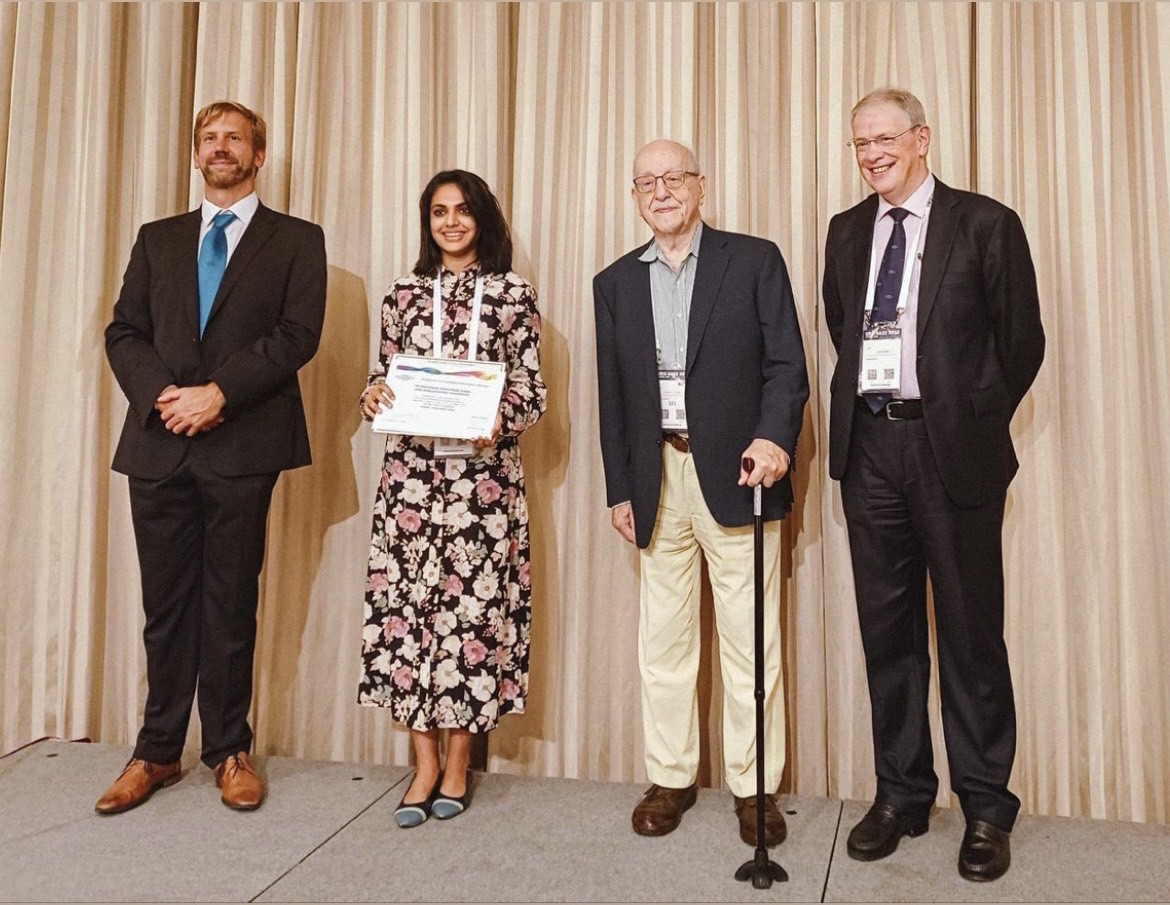
Dr. Steffy Sara Varghese’s theoretical model could be an efficient tool to understand the microphysics of Saturn’s magnetosphere and plasma waves.
Khalifa University of Science and Technology Postdoctoral Fellow, Dr. Steffy Sara Varghese, has been awarded the URSI GASS 2023 Young Scientist Award for her research paper titled ‘Significance of Kappa Distributed Electrons on Electrostatic Solitary Waves in Saturn’s Magnetosphere’, at a scientific symposium recently held in Japan.
Affiliated with the Mathematics Department at Khalifa University and as a researcher at the Khalifa University Space and Planetary Science Center (KU SPSC) – Magnetospheric Modeling – Dr. Varghese published her paper under the guidance of Dr. Ioannis Kourakis, Professor of Mathematics and Theme Leader for Magnetospheric Physics at KU SPSC.
The announcement of the Young Scientist Awards was made by the International Union of Radio Science (Union Radio-Scientifique Internationale or URSI) during the 35th General Assembly and Scientific Symposium (GASS) of URSI and the URSI Atlantic Radio Science Conference (AT-RASC) recently held in Sapporo, Hokkaido, Japan. These awards recognize young individuals – less than 35 years of age – who have made innovative contributions and discoveries in multidisciplinary research related to radio science, which is the study of all aspects of electromagnetic fields and waves.
URSI General Assemblies and AT-RASC conferences are held every three years to review current research trends, present new discoveries, and plan for future research and projects in radio science.
Dr. Varghese’s award-winning paper focuses on the significance of kappa distributed electrons on electrostatic solitary waves (ESW) in the magnetosphere of Saturn – an ideal environment for studying the behavior of particles and waves owing to the planet’s rich plasma system in its magnetosphere.
Kappa distributions have been studied extensively in different space environments as well – such as the solar wind, planetary magnetospheres (including Saturn’s), and other regions. Scientists have also used data from sophisticated diagnostic instruments onboard the NASA Cassini mission to Saturn to detect and characterize ESWs in Saturn’s magnetosphere.
Following a similar path of using observations from the Cassini spacecraft mission, Dr. Varghese investigated the behavior of electrons following kappa distributions in Saturn’s magnetosphere and explored their impact on the formation of plasma waves, particularly ESWs. Her theoretical model explored the significance of the electron parameters (density and temperature) in the evolution and the characteristics of ESWs occurring in Saturn’s magnetosphere. In order to validate the accuracy of the theoretical model, Dr. Varghese compared its predictions with real observations of ESWs in Saturn’s magnetosphere, providing an efficient tool to understand the microphysics of Saturn’s magnetosphere and enhancing our understanding of ESWs.
This year’s Young Scientist Awards were presented during the Young Scientists Party, a networking event where scientists interacted with senior members of URSI, including URSI Board members, Commission Chairs, Vice-Chairs, and Early Career Researchers.
Alisha Roy
Science Writer
31 October 2023






